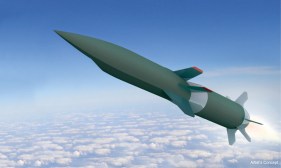DARPA taps 14 companies to study infrastructure needs for future lunar economy

The Defense Advanced Research Projects Agency announced Tuesday that 14 different vendors will study what infrastructure and other capabilities are needed to create a moon-based economy in the next 10 years.
The 10-Year Lunar Architecture, or LunA-10, capability study aims to define the analytical frameworks for an infrastructure that will be key to laying the foundations for a future self-sustaining lunar economy. The goal of the study is to better understand what a moon-based economy could look like, and therefore what investments will be needed to realize it.
Over the next seven months, DARPA and companies chosen to participate in the study will work together to design new integrated solutions for a moon-based economy — including “lunar power; mining and commercial in-situ resource utilization; communications, navigation, and timing; transit, mobility, and logistics; and construction and robotics,” according to an agency press release.
The vendors chosen range from traditional government contractors to smaller start-up companies. They include Blue Origin, CisLunar Industries, Crescent Space Services, Fibertek, Inc., Firefly Aerospace, GITAI, Helios, Honeybee Robotics, ICON, Nokia of America, Northrop Grumman, Redwire Corporation, Sierra Space and SpaceX.
“LunA-10 has the potential to upend how the civil space community thinks about spurring widespread commercial activity on and around the Moon within the next 10 years,” Michael Nayak, program manager for DARPA’s Strategic Technology Office, said in a statement. “LunA-10 performers include companies both big and small, domestic and international, each of which brought a clear vision and technically rigorous plan for advancing quickly towards our goal: a self-sustaining, monetizable, commercially owned-and-operated lunar infrastructure. We’re excited to get started and to share results with the lunar community at large.”
The study will conclude in June 2024, and the agency plans to publish an analytical framework with defined infrastructure and a plan for scaling the systems. Before that, participants will have the opportunity to brief the lunar community on their work at the Lunar Surface Innovation Consortium (LSIC) Spring Meeting in April 2024, a DARPA press release stated.
According to a presolicitation released in August, the study will focus on three thrust areas — energy, communications and mobility — in addition to other relevant concepts for lunar infrastructure.
Notably, the study focuses on “multi-service” infrastructure — meaning a single infrastructure node that could perform more than one function. In an interview with DefenseScoop in August, Nayak explained that this helps address some of the logistical challenges of getting to the moon.
The United States, other nations and the commercial space industry have been working to return to the moon to further study it and potentially stand up a lunar economy. A number of government programs are currently underway — from NASA’s Artemis program to DARPA’s Demonstration Rocket for Agile Cislunar Operations (DRACO) nuclear thermal rocket engine — that aim to establish a regular human presence on the moon before the end of the decade.
LunA-10 won’t fund the development or fielding of the technologies identified in the study, but instead serve as a vehicle for industry collaboration. The study is strictly tailored to capabilities for commercial and economic use, and DARPA anticipates that the study will not be applicable for military applications.






